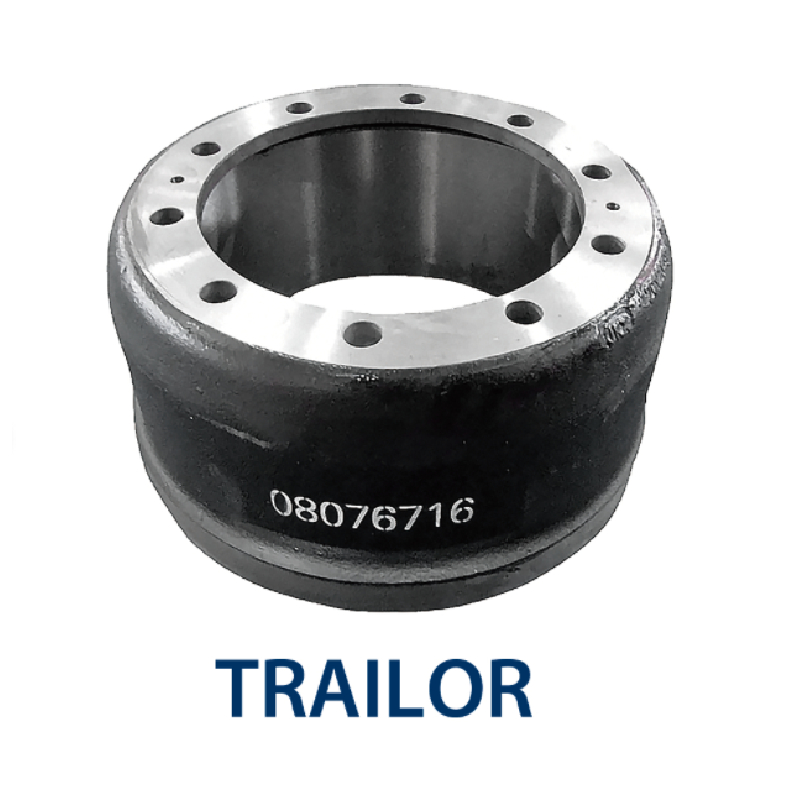Dec . 12, 2024 01:59 Back to list
Effective Methods for Removing Rust from Brake Drums to Restore Performance and Safety
Brake Drum Rust Removal A Comprehensive Guide
Brake drums are vital components of a vehicle's braking system, playing a crucial role in ensuring safety while driving. Over time, exposure to moisture, road salt, and various environmental factors can lead to rust and corrosion on these parts. Rust not only affects the aesthetic appearance of brake drums but can also compromise their functionality and lifespan. Therefore, timely rust removal is essential for maintaining optimal brake performance. In this article, we will explore effective methods for brake drum rust removal, preventive measures, and tips for keeping your brakes in top condition.
Understanding Rust Formation
Rust, or iron oxide, forms when iron or its alloys, such as steel, encounter moisture and oxygen. In areas with high humidity or salt exposure, like coastal regions or snowy locales, brake drums are particularly susceptible to rust. When rust develops, it creates a rough surface on the brake drum, leading to inconsistent braking, increased wear on brake shoes, and ultimately, reduced safety.
Tools and Materials Needed
Before starting the rust removal process, gather the following tools and materials
- Safety goggles and gloves - Wire brush or drill with a wire brush attachment - Sandpaper (preferably 80 to 120 grit) - Rust remover or rust converter - Clean rags or paper towels - Brake cleaner - Paint (anti-corrosive if desired) - Protective coating (optional)
Step-by-Step Rust Removal Process
1. Safety First Always wear safety goggles and gloves to protect yourself from debris and chemicals. Ensure you're working in a well-ventilated area.
2. Remove the Brake Drum Begin by safely lifting the vehicle using a jack and securing it with jack stands. Remove the wheels, then unbolt and take off the brake drums. Follow your vehicle's manual for specific instructions.
3. Inspect the Brake Drums Check the extent of the rust. Surface rust is often easier to remove than deeply pitted rust, which may indicate the need for drum replacement.
brake drum rust removal

4. Remove Loose Rust Use a wire brush or a power drill with a wire brush attachment to scrub off any loose rust and debris. This step helps in exposing the underlying metal.
5. Sand the Surface For any remaining rust, use sandpaper to smooth the areas affected. Sanding will help create a better surface for any treatments you apply later.
6. Apply Rust Remover After sanding, clean the drum with a brake cleaner to remove any dust or grease. Then, apply a rust remover or rust converter as per the product’s instructions. This will help neutralize the rust and prevent further corrosion.
7. Clean Again Wipe the brake drum with a clean rag after using rust remover. Ensure no residue is left. This prepares the surface for painting or protective coating.
8. Paint (Optional) If desired, apply a coat of anti-corrosive paint. This step enhances the durability of the brake drum against future rust formation. Allow the paint to dry completely.
9. Reinstall the Brake Drum Once everything is thoroughly dry, reinstall the brake drums back onto the vehicle. Ensure everything is tightened according to manufacturer specifications.
Preventive Measures
Preventing rust is always better than removing it. Here are some tips to help minimize rust on your brake drums
- Regular Inspections Frequently check the brake system for signs of rust, especially in regions with harsh weather conditions. - Keep Drums Dry After driving in wet or snowy conditions, ensure the vehicle is parked in a dry area. This reduces moisture accumulation on brake components. - Use Protective Coatings Consider applying a protective coating to the brake drums to add an extra layer of defense against rust. - Maintain Your Vehicle Regular vehicle maintenance, including cleaning the brakes and checking for issues, can significantly prolong the life of your brake drums.
Conclusion
Rust removal from brake drums is an essential maintenance task that every vehicle owner should consider. By following the outlined steps and implementing preventive measures, you can extend the life of your brake components and ensure a safe driving experience. Regular care and vigilance will help keep your brakes functioning smoothly, providing peace of mind on the road. Remember, when in doubt about the severity of rust damage, consult a professional mechanic for advice and assistance.
-
Durable Brake Drum MAZ for Heavy Duty Trucks | High Performance
NewsAug.26,2025
-
FUWA: Premium Quality, Reliable Performance & Innovative Solutions
NewsAug.25,2025
-
Liza Brake Drum: Superior Quality & Performance for Safe Driving
NewsAug.24,2025
-
Iveco Brake Drum | Premium OE Quality for Daily & Eurocargo
NewsAug.22,2025
-
Your Brake Drum Man: Quality & Performance Parts
NewsAug.21,2025
-
Explore Japan: Ultimate Travel Guide & Authentic Experiences
NewsAug.19,2025
